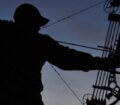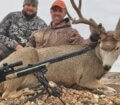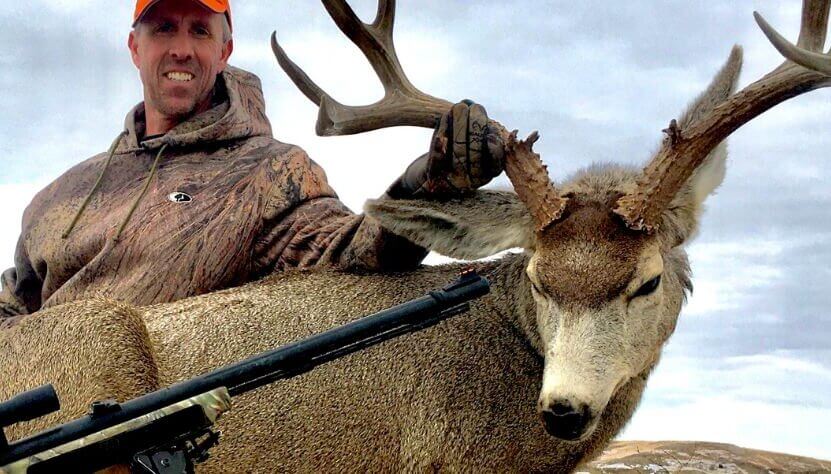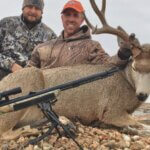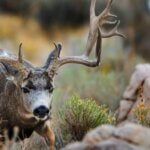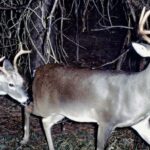Editor’s Note: Keith Pullins of Rapid City, South Dakota, has been hunting mule deer ever since
he started walking – for about 30+ years. Pullins has taken over 25 mule deer with his
bow and 30+ with his rifle. His best bowhunting mule deer scored 164 on Pope & Young (P&Y).
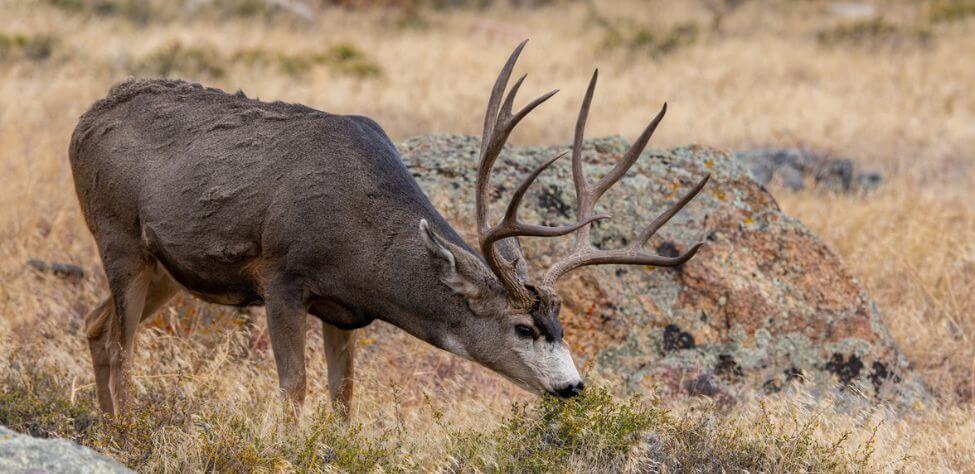
I shot this 170-inch muley buck the same year I took my biggest archery buck. I was lucky
enough to take three big mule deer that year. I was hunting on my wife’s family farm, and we’d
been hunting all day. For the afternoon hunt, we went to a high ridge and started talking
about the different places we might hunt. As I was talking, I looked through my spotting scope
and found a bedded mule deer buck about 500 yards away. I said, “Hey guys! I think I found a magnificent buck.”
All I could see was the back of the buck, and his head was facing away from me. This buck was
across a canyon, so I decided to go down that drainage and try and look for what kind
of angle I could get on this buck to take a shot. Every 100 yards, I’d check the buck and make
sure he was still bedded where I’d seen him earlier and to see the angle of the shot I would have to make if I took him in his bed. Finally, after my third stop, I saw I had a broadside shot at
the buck – 300-yards away from me. I felt pretty confident in taking that shot because I had already taken mule deer bucks at 400-plus yards before.
I was shooting a Weatherby .270 Short Mag. I was using a Vortex Scope and binoculars. I had a bipod on my rifle to provide a steady rest to take the shot. Where I hunted was a lot of prairie ground, and I believed a quality bipod would make the difference on whether I’d get my buck or miss him, especially when taking long shots. I pulled my bipod legs out, pushed my rifle right up to the crest of the hill, and then lay prone for a couple of seconds, trying to catch my breath before I made the shot. Oftentimes, eastern hunters who come west to hunt forget that when making a long hike or climbing up a steep hill, you need to catch your breath and delay your shot until you can be steady before you squeeze the trigger.
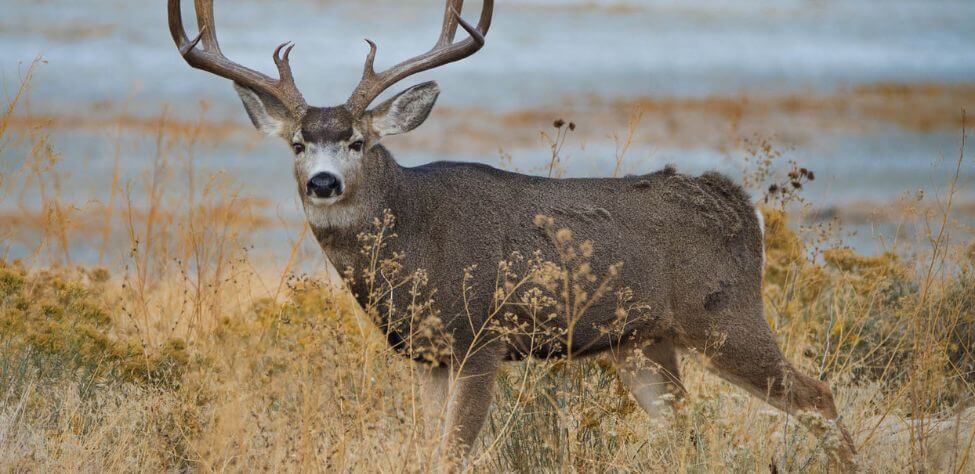
Once I squeezed the trigger, I saw the bullet hit the buck right where I wanted. I was below the buck, and when the bullet entered it, it broke his spine and took out his lungs. The buck never moved after that. My wife’s cousin, Carey, watched the whole thing. I knew that I had to cross the canyon to get the buck, and Carey already had covered the 200 yards from where he’d been watching me take the shot. The two of us went down the canyon, across the bottom, and climbed up the other side to reach my buck. When we got to the deer, I called an adjacent landowner and asked permission to bring a vehicle onto his property to get my mule deer out. Even though we had to drag the deer to the car, this was much easier than dragging the deer through the canyon, across the bottom, and up the hill where the rest of the family was waiting.
My wife’s family owns 2,000 acres of private land, and they know and are friends with all the adjacent landowners. So, obtaining permission to go on the other landowner’s property to get my buck out wasn’t any problem. Most of the public-hunting land I hunt is in the National Grasslands. This public hunting area is about 10 miles long and 10 miles wide, with plenty of room for everyone to hunt. The U.S. Forest Service oversees this grassland. I have plenty of public and private lands to hunt around my home for mule deer.
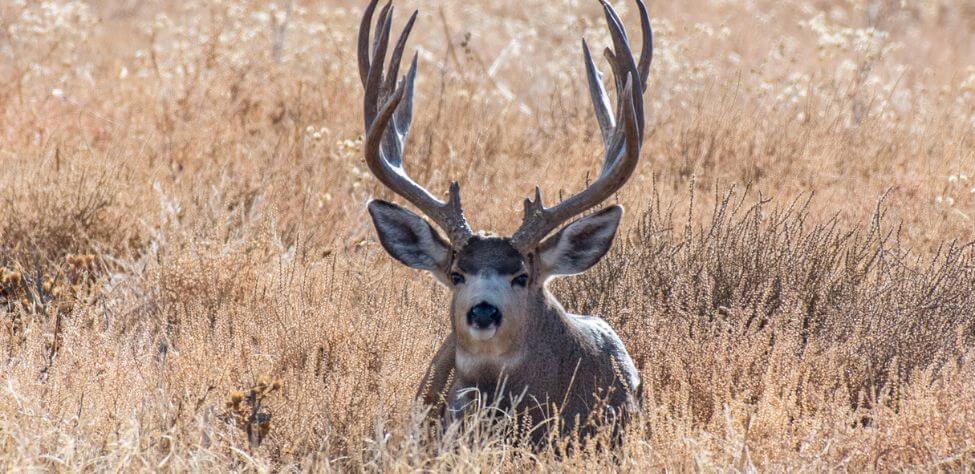
Anyone coming to the West from the East must know the boundary lines of the property they’re planning to hunt. After they pick out where they’ll hunt mule deer, if they’re hunting close to private land, I strongly recommend that they learn the names and phone numbers of the private landowners near the public lands. If you wound a mule-deer buck, and he goes from public land to private land, you’ll need the landowner’s permission before you retrieve your buck.
I’m often asked, “How much hunting pressure does the public land you hunt receive?” During bow season, there’s not much pressure, but in rifle season, this public land receives plenty of hunting pressure. I’ve learned that the only way to find a nice mule deer buck to hunt is to put miles on your boots to escape any access points. Sometimes, you only have to get 300 yards off a public road to pinpoint deep draws where the mule deer bucks will hide. However, I often go several miles before daylight where I can glass a property and see down in that grass a buck to hunt. The reason I mention the grasslands and how to hunt them is that I took two of my three bucks that scored over 160 on public lands.

Tomorrow: Hunting for My 170 Rifle Muley Deer

